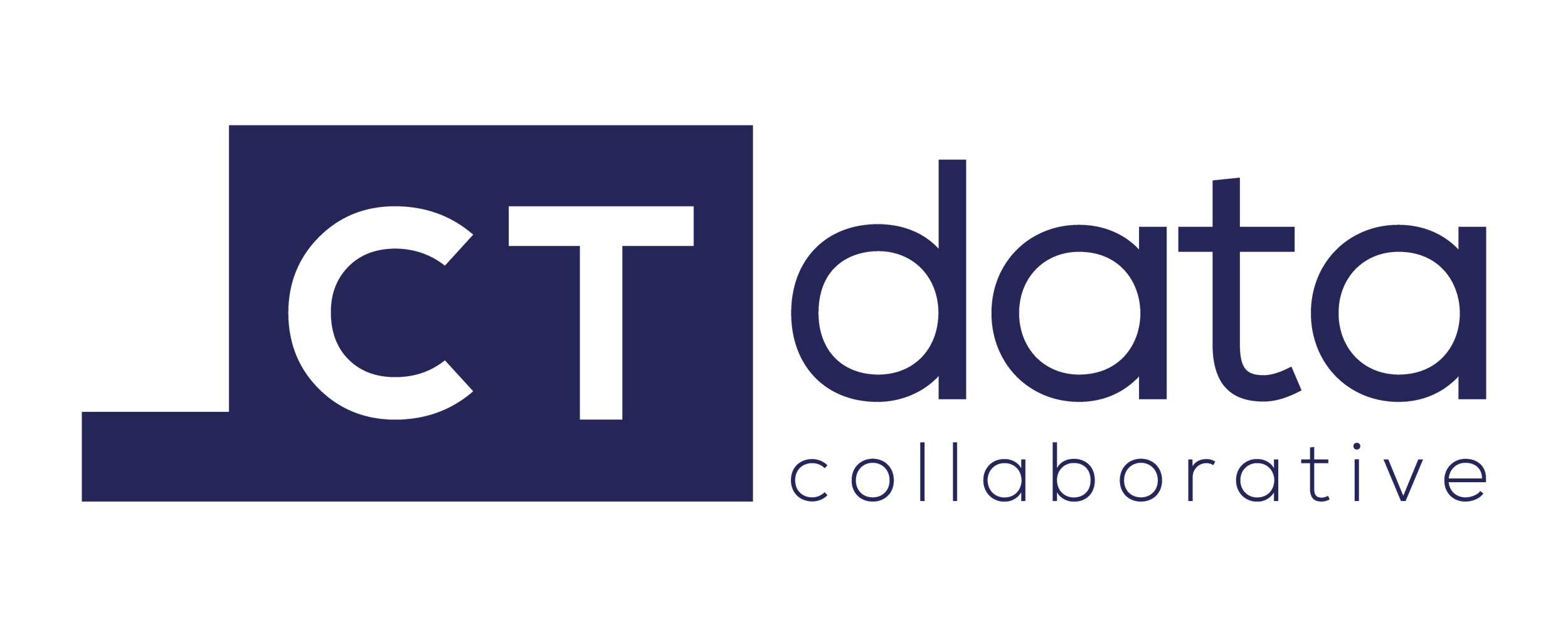Promoting Equitable Pandemic Recovery for Hartford’s Young Children
March 2024
Across the nation, the COVID-19 pandemic has had widespread impacts on young children and the systems that support their healthy development.
In 2023, CTData partnered with the City of Hartford’s Division of Early Learning in the Department of Families, Children, Youth and Recreation to understand how the COVID-19 pandemic has impacted the early care and education experiences and the development of young children in Hartford, and the supports that child care providers and families need. We analyzed administrative records from Hartford’s Early Childhood Data System, conducted a survey of Hartford child care providers, and facilitated focus groups with parents of young children in Hartford.
The goal of this work is to provide city administrators, policymakers, early childhood advocates, and early childhood service providers with data they can use to inform their work to promote equitable pandemic recovery for all of Hartford’s young children.
Research Questions
How has the pandemic impacted the early care & education experiences and the development of Hartford’s young children?
Are these impacts different depending on children’s age, racial/ethnic identity, English language learner status, family income level, or zip code of residence within Hartford?
What challenges are Hartford’s child care providers and families experiencing, and what supports do they need?
Key Findings
Child Care Center Enrollments
Enrollments in Hartford’s state-funded child care centers dropped by 43% following the onset of the pandemic.
In September 2022, total enrollments were still 30% lower than pre-pandemic levels.
In our survey of Hartford child care providers in Spring 2023, we asked about reasons for vacant child care slots:
Additionally, 52% of community-based child care centers reported that not having enough staff to operate at full capacity contributed substantially to the number of vacant child care slots that they have.
The pandemic-related drop in enrollments was concentrated among children in poverty.
Enrollments for children whose family incomes were below the poverty threshold dropped by 49% in 2019, compared to 27% for children whose family incomes were above the poverty threshold.
By September of 2022, enrollments for children in poverty were still 41% lower than in 2019, whereas enrollments for children whose family incomes were above the poverty threshold had nearly recovered to pre-pandemic levels.
Child Care Center Attendance Rates
Average attendance rates for children in state-funded child care centers dropped by 3 to 4 percentage points after the onset of the pandemic.
Children identifying as Hispanic showed a particularly large and sustained drop in attendance rates following the onset of the pandemic, from 81% in the 2019-2020 fiscal year to 76% in each of the following three years.
Children’s Development
In our survey of Hartford child care providers, child care center administrators reported high levels of concern about children’s development and high rates of emotional and behavioral problems among the children in their care.
Child care center administrators were particularly concerned about children’s language development:
For preschool-aged children, most child care center administrators also expressed concern about cognitive development and social skills:
Nearly all child care center administrators reported that some or many children were exhibiting greater emotional and behavioral problems than they would expect for children their age:
Challenges for Hartford’s Child Care Providers
The challenge of meeting children’s developmental needs is heightened by the current child care staffing crisis and high levels of provider burnout. In our survey of Hartford’s child care providers:
Administrators of community-based child care centers reported that staffing shortages had negatively impacted their capacity to serve Hartford’s young children and contributed to staff burnout:
Staffing shortages were due to both a lack of qualified applicants and the low salaries that community-based centers could afford to pay their staff:
Both child care center administrators and family child care providers reported that financial strains were making it challenging to keep their program running:
83% of community-based child care centers and 68% of family child care providers reported that it is challenging to keep their program running because government subsidies or funding don’t cover expenses.
Challenges for Hartford’s Families with Young Children
In focus groups with parents of young children in Hartford, we asked about barriers to accessing affordable child care in their community. We learned that:
Cost is a major barrier to obtaining child care, and the income cutoff for Care 4 Kids subsidy eligibility excludes many families that need help paying for care.
Families need transportation to child care and more before- and after-school care options co-located with school-day programs.
We also asked parents about how the pandemic has impacted their family. We learned that:
Frequent disruptions to child care during the pandemic made it hard for working parents to maintain sufficient work hours.
Families experienced mental health challenges, stress in the home, and the grief of losing family members and friends during the pandemic.
Data Sources
-
Background
The City of Hartford manages an Early Childhood Data System that contains data on all Hartford child care centers that are receiving School Readiness Grants or Child Day Care Contract funding from the state. This data system includes information on both children who are enrolled in state-funded slots and, conditional on parents signing a permission form, children who are enrolled in non-state-funded slots at the sites that are receiving state funding.
For this project, CTData obtained non-identified records from the City of Hartford’s Early Childhood Data System for children who were enrolled in state-funded child care centers between January 1st, 2017, and April 12th, 2023. The data request and the research plan were reviewed and approved by the Hartford Data Collaborative and Solutions IRB.
Analysis Sample
In our analyses, we focus on enrollments as of September 30th of each school year and attendance rates in the 2017-18 through 2022-2023 fiscal years.
We analyze enrollment data for 47 child care sites that received state funding since January 2017. Twenty-eight of the 47 sites (60%) had received state funding during each fiscal year from 2017-2018 through 2022-2023.
We analyze attendance data for 25 state-funded child care sites that reported at least three months of attendance data for at least two fiscal years (July 1st – June 30th) between 2017-2018 and 2022-2023. Our attendance rate calculations exclude March – August of 2020 due to extensive site closures and inconsistent attendance reporting during these months, and all months after April 12th, 2023, which is when the data were exported. The attendance sample excludes all state-funded preschool programs at public schools since these sites did not enter attendance data into the City of Hartford’s Early Childhood Data System prior to the 2022-2023 school year.
-
Background
CTData partnered with the Division of Early Learning in the City of Hartford’s Department of Families, Children, Youth, and Recreation on a survey that was distributed to administrators of all Hartford child care programs in March through April of 2023. This survey asked about providers’ current operational challenges and needs, as well as their concerns about children’s development and staff stress levels. The survey was made available in both English and Spanish. All survey research protocols were approved by Solutions IRB.
Analysis Sample
In total, 49 responses were collected between March 16th and April 10th, 2023.
These included:
• 22 administrators of child care centers, representing 49% of the 45 Hartford child care center administrators who were invited to complete the survey. These 22 administrators reported on 25 community-based child care centers and 11 public school pre-K’s, representing 61% of the 59 child care centers in Hartford.
• 27 family child care providers, representing 30% of the 89 family child care providers who were invited to participate.
-
Background
CTData, in partnership with the Division of Early Learning in the City of Hartford’s Department of Families, Children, Youth, and Recreation, conducted focus groups with parents of young children in Hartford to hear their perspectives on the impact of the pandemic on their families and current challenges with child care access in the city. All focus groups were conducted in April of 2023. All focus group research protocols were approved by Solutions IRB.
Parents of young children were recruited through flyers in both English and Spanish distributed to parents by Hartford Public Schools, state-funded child care centers, and family child care providers. Parents and legal guardians were eligible to participate if they lived in Hartford and had any child under 8 years old as of April 2023 (that is, they had a child who was under 5 years old when the pandemic began in the spring of 2020).
Analysis Sample
In total, 15 parents or legal guardians participated in the focus groups. The focus groups were held in three sessions with between four and seven parents in each session.
Participating parents lived in 11 neighborhoods across the City of Hartford. Fifty-three percent of participating parents had enrolled their children in child care centers, 13% had used family child care providers, and 33% had used parent/guardian-only care for their children.
Read the Full Reports to Learn More:
Pandemic-related changes in young children’s enrollment and attendance in state-funded child care centers in Hartford, overall and disaggregated by age range, racial/ethnic identity, English language learner status, family income level, and zip code of residence
Child care provider reports of child care slot vacancies and reasons for these vacancies
Pandemic-related changes in children’s receipt of services for a developmental delay or disability
Child care provider reports of their current concerns about children’s development
Parents’ stories of how the pandemic has impacted their family
Challenges to operational sustainability
Slot vacancies and wait-lists
Staffing shortages
Staff hiring and retention challenges
Requests for operational support
Provider stress and burnout
Concerns about children’s development
Prevalence of emotional & behavioral problems
Requests for additional supports to help meet children’s needs
View our Webinar with Shyleen Lopez from the City of Hartford:
Presentation of key findings
How the City of Hartford is using the findings to inform their work
Other early childhood research initiatives at CTData
Acknowledgements
This work was supported in part by a grant from the Robert Wood Johnson Foundation. The views expressed here do not necessarily reflect the views of the Foundation.
We thank the Urban Institute for providing technical assistance and a peer learning network to support this work.
We are deeply grateful to Katie McGinnis and Shyleen Lopez in the Division of Early Learning at the City of Hartford’s Department of Families, Children, Youth, and Recreation for their thought partnership and active support which made this project possible.
We wish to thank all the Hartford child care providers who dedicated their time to responding to our survey, and the Hartford parents of young children who shared their stories with us.
We also thank our colleagues at CTData who supported this work: Kate Eikel who ensured that this project complied with the ethical data use standards and procedures of the Hartford Data Collaborative; Jill Walsh who helped with mapping the data by Hartford zip code; and Wenyu Xie who contributed to the graphic design of the final report.












